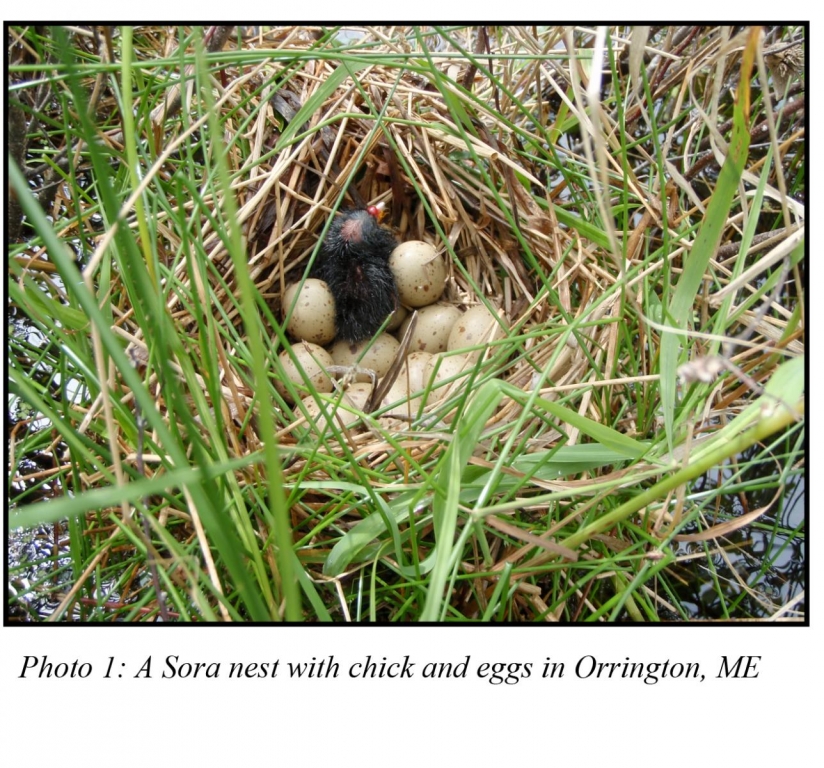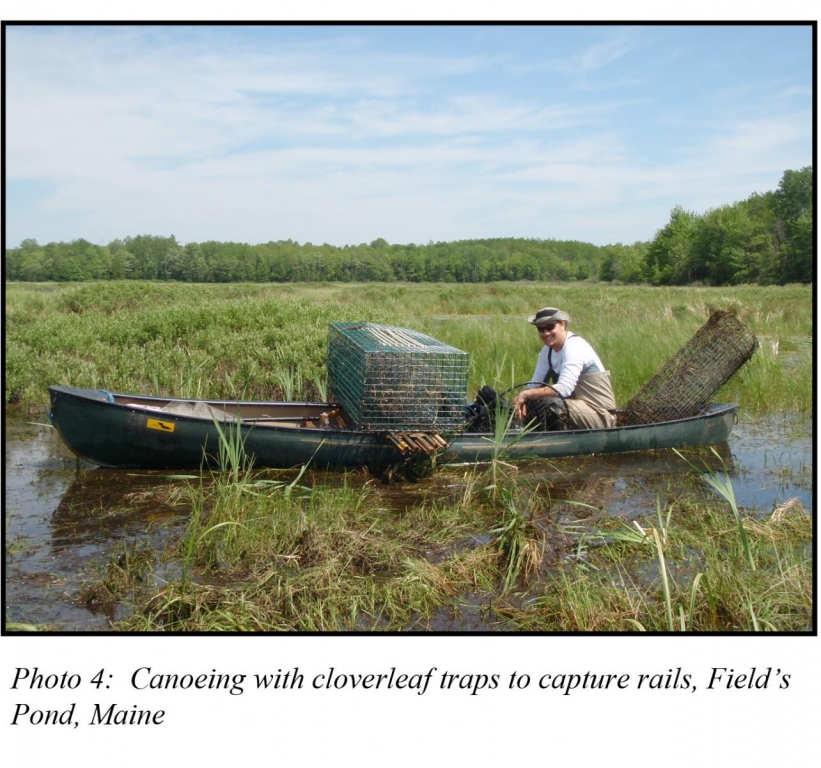Maine Wetlands 2010 – Assessing the Effect of Hydrologic Change on Sora and Virginia Rail Populations
Maine Wetlands 2010
Assessing the Effect of Hydrologic Change on Sora and Virginia Rail Populations
Ellen Robertson and Brian Olsen
Maine (Penobscot and Washington Counties-May through August-2010)
The goal of this expedition was to understand how future changes in hydrologic regimes from climate change will impact the breeding marsh birds of the Northeastern United States. To accomplish this we visited a series of Maine wetlands in Penobscot and Washington Counties that exhibit a variety of hydrologic profiles and degrees of artificial impoundment (a common wetland management technique that creates wetlands by damming aquatic sources to provide waterfowl habitat). By quantifying the effect of this variation on two marsh bird species, the Sora and the Virginia Rail, we will be able to predict the effects of an increase in the periodicity or intensity of any hydrologic condition that exist across our gradient of wetland profiles.
Freshwater wetlands have experienced steep declines throughout North America and the greatest threat facing marsh bird populations is wetland habitat loss. According to survey data, Virginia Rails and Soras have experienced population declines of approximately 22-33% in the past 30 years. Impoundments are commonly built to offset wetland habitat loss, but they change the hydrology, vegetation, soil types, and many other important characteristics of the aquatic areas they replace. Under a changing climate, these techniques may be critical to maintaining wetland habitats in state and federal management units, but it is unknown what effects the altered hydrological regimes (both from climate change, artificial impoundment, and their interaction) will have on long-term wetland bird viability.
Our study seeks to understand the various ways that wetland hydrologic regimes affect marsh bird ecology, including their reproductive success and their blood mercury toxicity. Our fieldwork involves wading through dense wetlands with a wide variety of hydrologic conditions in Maine searching for well-hidden rail nests; monitoring the nests we find until success or failure; conducting broadcast surveys to establish rail use of the habitats; and capturing incubating birds and newly hatched chicks to collect blood samples for mercury analysis. During this past summer’s expedition we found 63 nests and captured 114 birds.





